What is a Disability?
A disability is a physical or mental impairment that substantially limits one or more major life activities. A person with a disability is someone who has a history or record of such an impairment, or a person who is perceived by others as having such an impairment.
How Disabilities Are Defined
There are over 1 billion people around the world who live with some form of disability. This is approximately 15% of the global population. Disability is often defined as any physical or mental condition that limits one or more life activity (e.g., seeing, hearing, learning, working) and community involvement.
Disability is also further discussed as visible or invisible. Visible disabilities are easily observed, such as a person who uses a wheelchair or has a service dog. Invisible disabilities are not readily observed; examples include epilepsy, dyslexia, attention deficit disorder (ADD) and mental health conditions.
It is important to note that the definition of disability is an evolving concept moving away from the focus on an individual’s limitations or impairments, to one focused on the inaccessibility of an environment—whether that environment is the workplace or the community.
SHRM utilizes three primary sources to discuss and inform HR professionals and their organizations about disability and disability inclusion. As SHRM’s headquarters are located in the United States, we are guided by the Americans with Disabilities Act (ADA). For our global HR community, we also leverage the disability definitions from the World Health Organization and the Convention on the Rights of People with Disabilities (CRPD).
- Americans with Disabilities Act Definition
- What you need to know about the ADA
- World Health Organization Definition
- Convention on the Rights of People with Disabilities Definition
- The CRPD is working to shift the focus on people with disabilities as a charitable endeavor, or a group to care for an make decisions for, to viewing those with disabilities as individuals who have human rights, and are able to make decisions for themselves and fight for their basic human rights.
- The CRPD seeks to establish a global standard across all countries to have consistency in access and inclusion of people with disabilities around the world. To date, 182 countries have ratified the CRPD.
Regardless of which definition is utilized, disability is part of the human condition and SHRM is committed to providing tools and resources to enable more effective inclusion and engagement of candidates and employees with disabilities.

